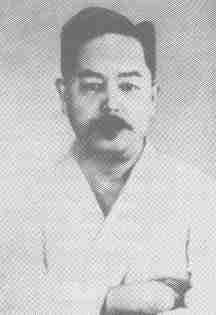|
|
|
Shito-ryu is one of the four major style of World Karate Federation, the world governing body of Karate. It was founded by Kenwa Mabuni (1887-1952), an Okinawan born descended of so called "Bushi" (warrior) class. During his time, the martial arts (Okinawa-te) was known according to the village where it was practiced : Shuri-te (the hand of Shuri), Naha-te and Tomari-te. Mabuni learned Shuri-te from Ankoh Itosu (1830-1915) who was a student of Sokon Matsumura (1792-1887), forefather of Shorin-ryu, and Naha-te from Kanryu Higashionna (1853-1915) who mainly studied Kempo in China's Fukien province under Liu Liu Kung. Mabuni Also learned several empty hand kata and Kobudo (weapon) kata from Arakaki (1840-1918) and some white crane Kung Fu forms from Woo Yin Gue, a chinese tea merchant in Okinawa.

After Gichin Funakoshi introduced "Karate" in Japan in 1922, Kenwa Mabuni as a police officer, travelled several times in Japan and tried to spread his knowledge of Okinawa-te in Japan. Finally he moved to Osaka, Japan in 1928 and started to teach Karate in Japan when Butokukai (then the governing body for martial arts in Japan) started registration for all Karate school and Master Mabuni named his style as Hanko-ryu (half-hard style) which he later in 1930's changed to "Shito-ryu" in honor of his two foremost teachers Itosu and Higashionna (the first kanji charater in 'Itosu' sounds like 'Shi' and that in 'Higashionna' sounds like 'to', 'ryu' stands for 'style' or 'school').
It may be noted that Ankoh Itosu and Kanryu Higashionna are the two most important name in the history of modern Karate-do as the Shotokan founder Gichin Funakoshi (1886-1957) was a student of Itosu (also of Azato) and the Goju-ryu founder Chojun Miagi (1888-1953) was a student of Kenryu Higashionna. The other style of the four major style of Modern Japanese Karate (Shito-ryu, Shotokan-ryu, Goju-ryu and Wado-ryu), Wado-ryu was founded by Hironori Ohtsuka (1892-1982) who studied Shotokan under master Funakoshi.
Master Mabuni, the founder of Shito-ryu Karate, died in Osaka, Japan in May, 1952 at age 64 leaving his name and art in every heart of each Shito-ryu Karate-ka.
In it's apperance Shito-ryu basically can be seen as a combination of Shotokan-like and Goju-like karate. Shotokan, which came from Shorin-ryu (from Shuri-te), utilizes long linear stances and physical power and Goju-ryu, which came from Shorei-ryu (from Naha-te and Tomari-te) utilizes up and down stances and internal breathing power (hard and soft techniques). Shito-ryu adopted both principles from Shorin-ryu and Shorei-ryu. Shito-ryu is fast, but still powerful and artistic. It incorporates the powerful Shuri-te kata like Naifanchin and Bassai, the hard and soft Naha-te kata like Sanchin and Kururunfa, and the artistic Chinese white crane kata like Nipaipo and Paipuren.
Shito-ryu is broad, still distinct. It emphasizes very much on Kihon (basics) at the beginning, but for a senior Shito-ryu student, quality and quantity run together. Shito-ryu contains all the eighteen Shorin-ryu kata, all the sixteen Shorei-ryu kata, the Chinese white crane kata, plus the kata devised by Master Mabuni himself from his broad knowledge and experiences, a total of more than sixty kata (depending on the organization).
Moreover, the special charateristic of Shito-ryu which distinguish it from other school is that, Shito-ryu lives together with Ko-budo (weapon arts) and sometimes Iaido (sword-drawing-arts). The Kihon, Kumite, Karate kata, Ko-budo Kata, Iaido kata and the principles & messages behind them made the treasury of Shito-ryu so magnetic and demanding that Shito-ryu deserves a life-long dedication to practice and perfect.